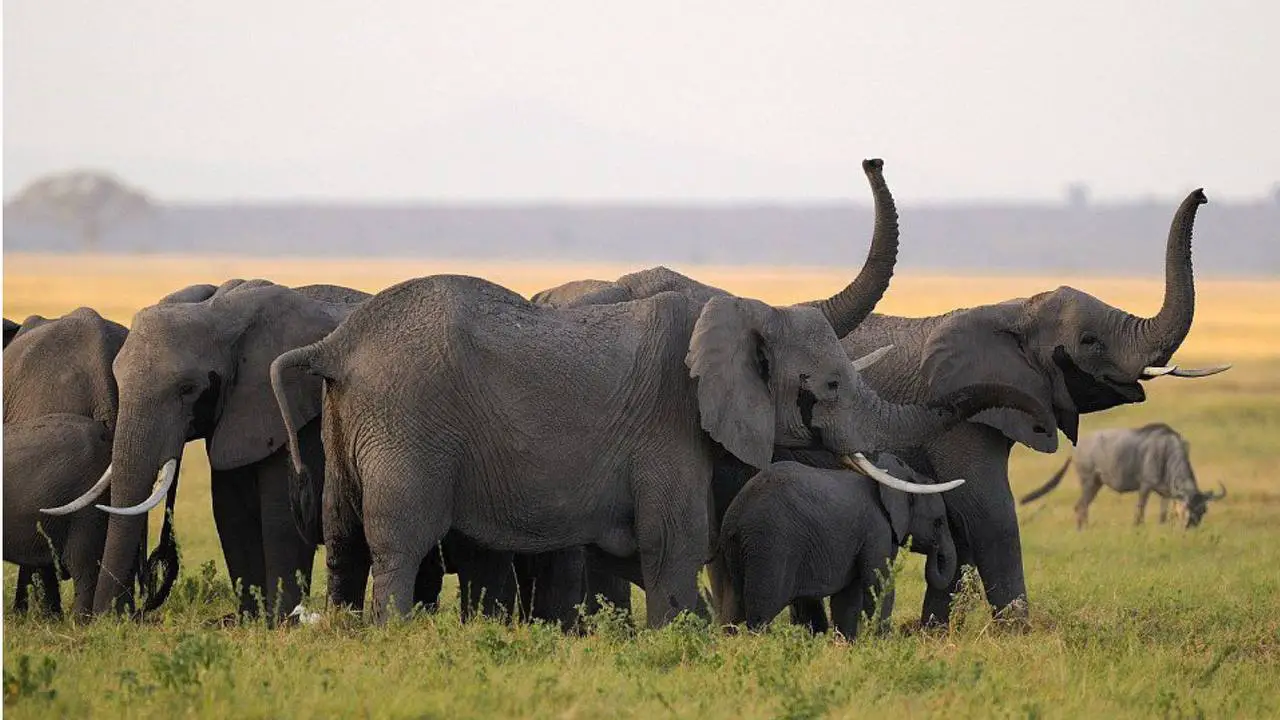In a heartwarming display of solidarity and protection, a herd of elephants formed an impenetrable barrier around a mother elephant as she prepared to give birth. The remarkable scene unfolded in the early hours of the month, capturing the attention of wildlife photographer Paolo Torchio.

As the mother elephant entered labor, the herd gathered around her, their massive bodies creating a protective shield against potential predators. With their enormous feet, they scratched the soil, closing any gaps in their formation and obscuring the sight of the newborn from prowling lions and hyenas.
Moments after the calf was born, it could be seen clinging to the tusk of an adult elephant with its trunk, struggling to its feet for the first time. The herd’s vigilance was unwavering, as they threw grass and soil into the air to disguise the scent of blood and placenta, further deterring predators.

Paolo Torchio, who witnessed this extraordinary event, described the herd’s behavior as a testament to their strong social bonds and instinctual protection. “It was a truly incredible sight,” he said. “To witness the birth of an elephant in the wild is almost impossible, as it’s impossible to predict the exact moment.”
The herd’s behavior was not merely a reflex; it was a deeply ingrained instinct that had evolved over generations. Elephants are highly social animals, living in tight-knit family groups. This social structure is essential for their survival, as it allows them to share resources, protect one another, and raise their young.

The Amboseli National Park, known for its abundance of free-ranging elephants, provided the perfect setting for this heartwarming spectacle. The herd’s united effort to protect their vulnerable member serves as a powerful reminder of the beauty and complexity of the natural world.
Beyond the immediate protection of the newborn, the herd’s behavior also highlights the importance of elephant conservation. These majestic creatures face numerous threats, including habitat loss, poaching, and human-wildlife conflict.
Habitat Loss: Deforestation and land conversion for agriculture and development are major drivers of habitat loss for elephants. As their habitats shrink, elephants are forced into closer contact with humans, increasing the risk of conflict.

Poaching: Elephants are hunted illegally for their ivory tusks, which are highly prized on the black market. Poaching has led to a significant decline in elephant populations across Africa.
Human-Wildlife Conflict: As human populations expand into elephant habitats, conflicts between humans and elephants often arise. Elephants may damage crops, property, or even threaten human lives.

To address these challenges, conservation efforts are focused on protecting elephant habitats, combating poaching, and promoting human-wildlife coexistence. This includes establishing protected areas, strengthening law enforcement, and implementing community-based conservation programs.
By preserving elephant populations and their habitats, we can help ensure the survival of these iconic animals and the ecosystems they inhabit for generations to come.

Explore Our Other Animal Heartwarming Stories!
Spread the joy! Share this adorable moment with your loved ones.
